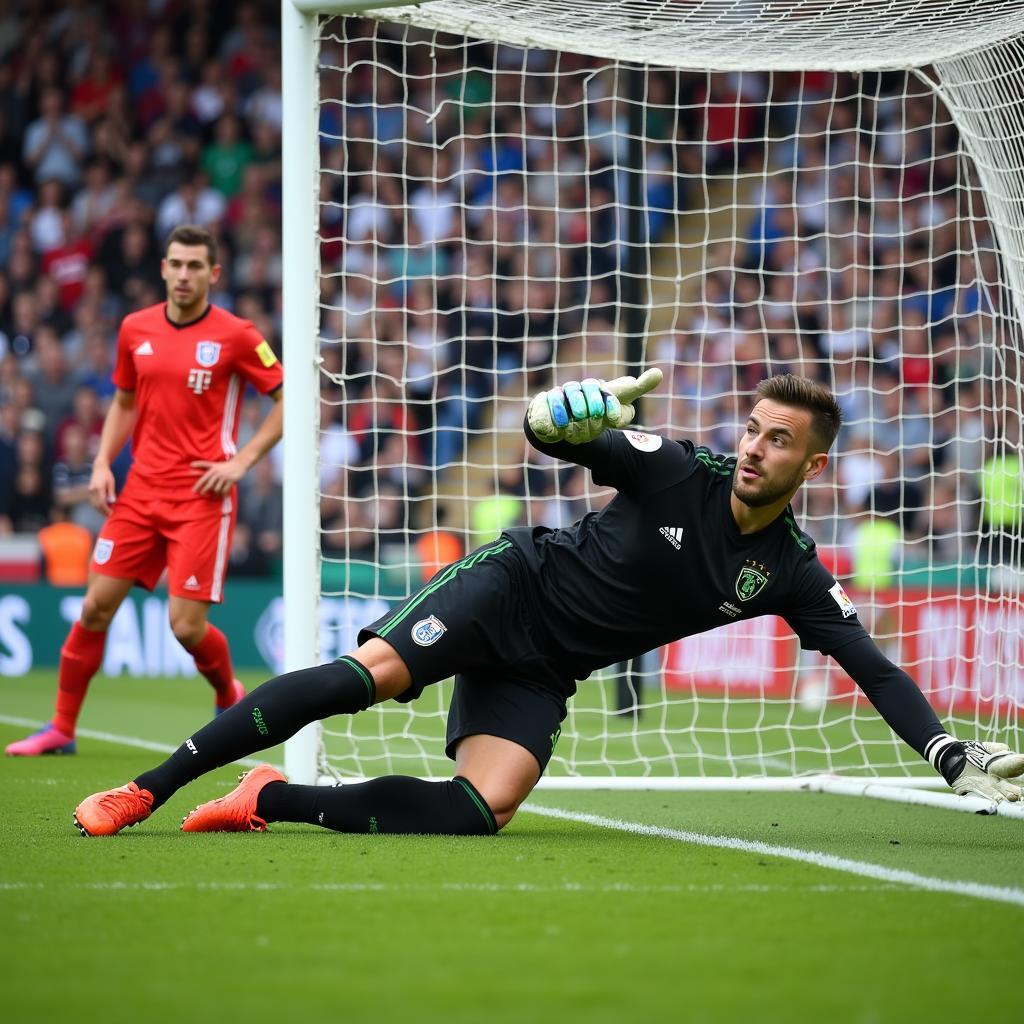Understanding Player Positions in Football
October 19, 2024As a striker, my focus is on scoring goals. But to do that effectively, I need to understand the role of every player on the field. Just like an orchestra needs all its instruments to create a symphony, a football team needs every player in their right “player position” to perform at their best. But what exactly are these positions, and how do they contribute to the beautiful game?
Decoding the Pitch: A Look at Different Player Positions
Football positions are more than just names. They reflect a player’s skill set, responsibilities, and tactical importance within the team. Let’s break down the most common formations and the key roles within them.
Goalkeeper: The Last Line of Defense
 Goalkeeper Making a Save
Goalkeeper Making a Save
Every team needs a rock at the back, someone who embodies calmness under pressure and possesses lightning-fast reflexes. That’s our goalkeeper. Tasked with the crucial role of preventing the opposition from scoring, the goalkeeper is the last line of defense and often the difference between a win, loss, or draw.
Defenders: Guardians of the Goal
Defenders are the shield protecting our goal. Their primary responsibility is to thwart attacks, clear the ball, and prevent the opposing team from taking shots. Depending on the tactical formation, there are different types of defenders:
- Center-backs: These are the heart of the defense, strong and uncompromising. They are often tall and dominant in the air, dealing with crosses and long balls.
- Full-backs: Positioned on the flanks, full-backs require a blend of defensive solidity and attacking flair. They overlap with wingers, provide crosses, and track back to defend.
Midfielders: The Engine Room
The midfield is where the game is controlled. It’s a high-energy role, demanding stamina, tactical awareness, and passing precision.
- Defensive Midfielders: These players act as a shield in front of the defense, breaking up opposition attacks and winning possession.
- Central Midfielders: They dictate the tempo of the game, distributing the ball, creating chances, and contributing to both attack and defense.
- Attacking Midfielders: Operating closer to the opposition’s goal, these playmakers are known for their creativity, dribbling skills, and ability to unlock defenses with precise passes.
Forwards: The Goal Hunters
This is where I come in! Forwards are the primary attacking threat, always looking to score goals and create havoc in the opposition’s penalty area.
- Strikers: As a striker, my job is to be in the right place at the right time. We rely on anticipation, positioning, and clinical finishing to convert opportunities into goals.
- Wingers: Blessed with pace and trickery, wingers stretch the opposition’s defense, provide crosses, and take on defenders in one-on-one situations.
The Importance of Teamwork and Adaptability
While understanding individual roles is crucial, successful teams thrive on cohesive teamwork and tactical adaptability. Players need to be versatile, comfortable playing different positions, and understand how their role contributes to the overall game plan.
Just like in my career, where I’ve had to adapt to different leagues and playing styles, understanding the intricacies of player positions is an ongoing learning experience.
Remember, football is a team sport, and every position plays a crucial role in achieving victory.
Do you want to learn more about specific player positions and their tactical significance? Check out our other articles:
- Build your Vietnamese dream team
- Find out more about the football community
- Test your knowledge of Vietnamese U23 players
If you need support, please contact us:
Phone Number: 0396443476
Email: [email protected]
Address: 23 Tháng 3, Đắk Nia, Gia Nghĩa, Đắk Nông, Việt Nam.
Our customer support team is available 24/7.